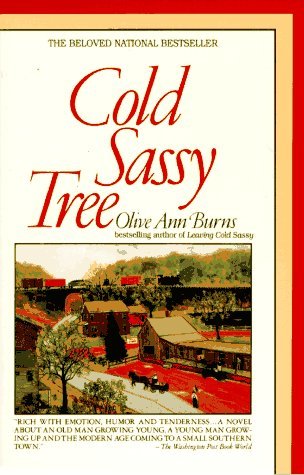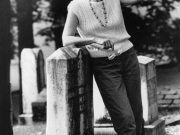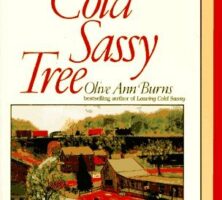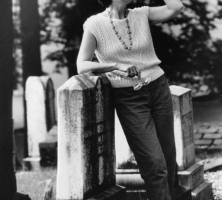Olive Ann Burns was a professional writer, journalist, and columnist for most of her life. She published two novels, one posthumously, and for many years was a staff writer for Atlanta newspapers and the Atlanta Journal Magazine. Her most notable achievement was Cold Sassy Tree, a novel that describes rural southern life and a young boy’s coming-of-age at the turn of the century.
Early Years
Olive Ann Burns was born in Banks County on July 17, 1924, to Ruby Celestia Hight and William Arnold Burns. The youngest of four children, she grew up during the 1930s in her father’s hometown of Commerce and attended high school in Macon. She then continued her education at Mercer University in Macon, where she studied for two years before transferring to the University of North Carolina at Chapel Hill. Shortly after graduating with a journalism degree in 1946, she was hired as a staff writer for the Atlanta Journal and Constitution Magazine (later Atlanta Journal Magazine) under the editorship of Angus Perkerson.
Burns wrote for the magazine for ten years. During that time she became acquainted with fellow journalist Andrew Sparks, and the two married in 1956. They had a daughter in 1957 and a son in 1960. Burns continued working as a freelance writer, serving as advice columnist “Amy Larkin” for the Atlanta Journal Magazine and the Atlanta Constitution until 1967.
Cold Sassy Tree
Burns once stated, “Being a journalist, I never expected to get around to fiction,” but in 1975 a cancer diagnosis altered her plans. Even before she left the doctor’s office, she had decided to write a novel, a decision that “surprised me more than the diagnosis.” Her preparations for the writing of the novel actually began somewhat earlier, when her mother was diagnosed with cancer in 1971. This diagnosis prompted Burns to begin a family history shortly thereafter. After her mother died in 1972, Burns relied on her father’s recollections to help her write the history. One of his favorite family stories was about Grandpa Power, a practical man who remarried three weeks after the death of his first wife, in part because he needed a housekeeper. Although Burns thought that the story of Grandpa Power’s quick marriage and its scandalous impact in a small town like Commerce would make an excellent premise for a book, she had never anticipated writing a novel until her own cancer diagnosis.
Burns worked on Cold Sassy Tree for eight-and-a-half years. Drawing from her family history, she continued to gather material about people and events at the turn of the century from relatives and friends, books, and newspapers. She transformed their vivid memories into the coming-of-age story of Will Tweedy, the novel’s main character and narrator, and his life in fictional Cold Sassy, Georgia, in 1906. The fourteen-year-old Tweedy was inspired by Burns’s father; his “adolescent” counterpart, the newly married Grandpa Blakeslee, was a reincarnated Grandpa Power. Inhabited by irreverent characters, the idyllic town of Cold Sassy provides the setting for a poignant and funny story about southern life at the turn of the century.

Cold Sassy Tree was published in 1984, when Burns was sixty. The novel became an instant success and was chosen as a Book-of-the-Month Club alternate selection. In 1985 it was added to the list of books recommended for teenagers by the American Library Association and the New York Public Library.
Leaving Cold Sassy
Burns began work on a sequel to Cold Sassy Tree before her relapse into cancer. In 1987 chemotherapy resulted in congestive heart failure, and Burns was prescribed bed rest. She turned for assistance to her neighbor Norma Duncan, who transcribed the author’s words, enabling her to finish the second novel, which was initially called Time, Dirt, and Money. After battling cancer for fifteen years, and being confined to bed for the last three, Burns died on July 4, 1990. Her second novel, renamed Leaving Cold Sassy, was published in 1992.







